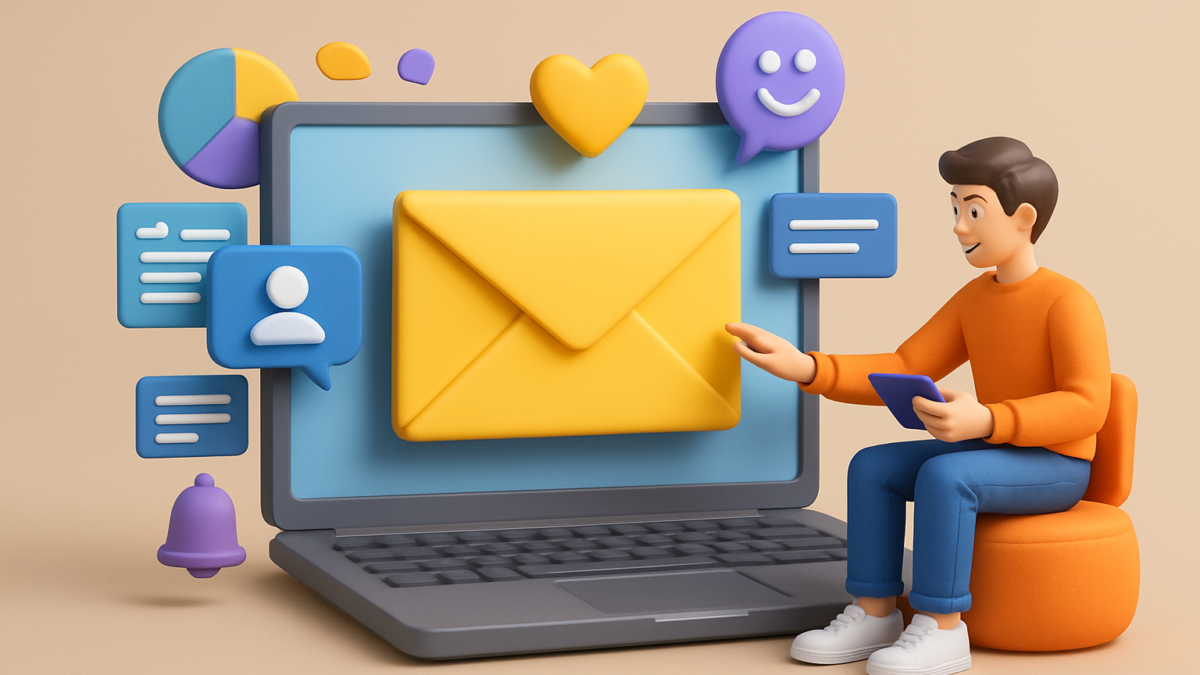Email Marketing in a No-Click World: Engaging Audiences Beyond CTAs
Table of Contents
For decades, email marketing success was measured by one metric above all—click-through rate (CTR). The formula was simple: send an email, get the recipient to click a CTA, and drive them to a landing page.
But in 2025, that formula is being rewritten. With privacy changes, shortened attention spans, and inbox fatigue, many recipients don’t want to click. Instead, they expect value inside the email itself. This new era—dubbed the no-click world—forces marketers to rethink how they design, measure, and optimize campaigns.
So, how do you engage audiences when clicks are no longer the main goal? Let’s dive in.
Why the “No-Click World” Matters
Several trends are driving the decline of click-focused email strategies:
- Privacy-First Changes
- Apple’s Mail Privacy Protection (MPP) and Gmail’s updates obscure tracking pixels.
- Open and click data is increasingly unreliable.
- Content Saturation
- B2B buyers receive hundreds of emails weekly.
- They’re less willing to click through unless value is obvious.
- Shifts in Engagement Behavior
- Readers skim emails on mobile.
- They prefer snackable insights directly in the inbox.
In short, the inbox is the destination—not just a stepping stone to a landing page.
Rethinking Email Engagement Beyond CTAs
1. Deliver Value Directly in the Email
Instead of forcing readers to click, give them what they need inside the message:
- Summarize research findings.
- Include micro-case studies.
- Provide quick tips in list form.
This approach turns your email into a standalone content asset.
2. Embrace Interactive Email Design
Static newsletters are fading. In 2025, interactive elements can drive engagement without leaving the inbox:
- Polls and surveys.
- Image carousels.
- Expandable sections with product info.
AMP for Email (supported by Gmail and Mail.ru) makes this possible, offering mini-experiences inside the inbox.
3. Use Storytelling Instead of Selling
Rather than pushing a CTA button, use narratives:
- Share a customer success story.
- Highlight a challenge your audience faces and how to solve it.
- Use “episodic content” (multi-part email series).
Storytelling keeps readers engaged, even if they never click.
4. Personalization That Feels Human
Generic blasts are dead. AI-driven personalization lets you:
- Tailor subject lines by role or industry.
- Customize email copy to match pain points.
- Insert dynamic product recommendations.
This creates relevance-first engagement, reducing reliance on clicks.
5. Redefine Success Metrics
In a no-click world, you can’t judge emails only by CTR. Instead, track:
- Read time / dwell time (are they consuming the content?).
- Scroll depth (are they reaching the end?).
- Replies (are they starting a conversation?).
- Conversions influenced (did the email nurture a deal, even without clicks?).
Real-World Example: Grammarly’s Email Strategy
Grammarly shifted toward a no-click model by embedding value directly inside emails:
- Weekly reports highlight writing performance without requiring clicks.
- Tips and suggestions appear in digestible, email-first formats.
Result: Higher engagement rates—even when readers never leave the inbox.
Email Marketing in B2B: No-Click Strategies That Work
B2B marketers face unique challenges—long buying cycles, multiple stakeholders, and content overload. Here’s how to adapt:
- Educational Series – Provide industry insights directly in email to build authority.
- Interactive Webinars in Inbox – Let users RSVP or view summaries without leaving the email.
- Thought Leadership Teasers – Instead of “click to download,” deliver a short summary inside the email, followed by an optional link.
Explore our Email Marketing Services to learn how to build B2B campaigns that engage without relying on clicks.
The Benefits of the No-Click Approach
- Higher Trust – You respect the reader’s time.
- Better Accessibility – Mobile users consume value instantly.
- Improved Engagement – Replies and interactions increase.
- Compliance-Friendly – Less reliance on invasive tracking pixels.
By focusing on value delivery, you strengthen relationships—even with audiences who never click.
Challenges to Overcome
- Creative Demands – No-click emails require stronger copywriting and design.
- Measurement Shifts – Teams must adapt to new KPIs.
- Technology Barriers – Not all email clients support interactive formats.
However, these challenges are outweighed by the benefits of building trust and engagement directly in the inbox.
The Future of No-Click Email Marketing
By 2030, email marketing will evolve into a content delivery channel in itself, not just a gateway to landing pages. Marketers will experiment with:
- Micro-newsletters focused on niche topics.
- AI-generated personalization at scale.
- Inbox-native transactions (e.g., event sign-ups, product demos booked directly in email).
Brands that adapt now will stay ahead of the curve.
Final Thoughts
The no-click world isn’t the end of email marketing—it’s the beginning of a smarter, value-first era. By shifting focus from clicks to content, personalization, and storytelling, B2B marketers can keep audiences engaged and loyal.
Remember: It’s not about where you drive readers—it’s about what you deliver while they’re with you.
Call-to-Action (CTA)
For more insights on modern lead generation, check out Whitepaper Lead Generation and see how thought leadership fuels engagement.





